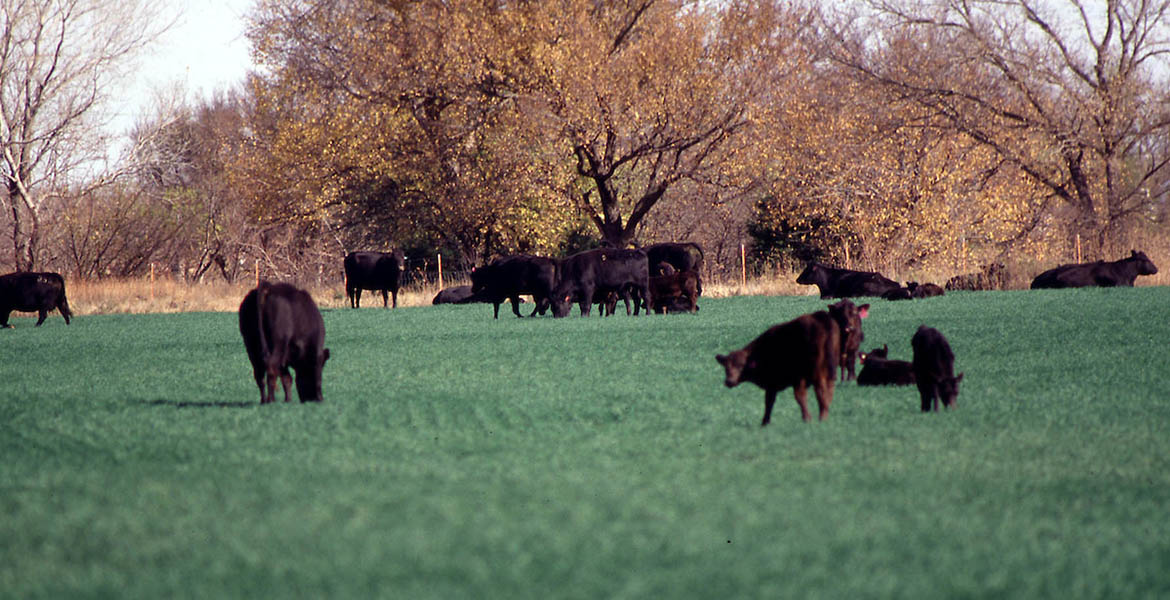
OSU researchers show it is possible to eat meat and remain ecofriendly
Tuesday, November 6, 2018
Agriculture, including beef production, is a known contributor of greenhouse gases, which hurt the environment.
But, what if environmentally conscious families who like and want to keep beef on the dinner menu could have their meat and eat it, too?
Yes, that option is on the table, according to new research by Oklahoma State University experts Bailey Norwood and Lance Gagelman.
In research published online in “The Rangeland Journal,” they showed an average household willing to spend just $20 annually on carbon offsets can achieve a carbon footprint similar to a vegetarian and continue eating conventionally raised beef.
Carbon offsets, or activities such as planting trees, help balance out the emission of carbon dioxide or other greenhouse gases into the environment.
Consumers can purchase carbon credits. One credit equals 1 metric ton of carbon emission. For context, consider a typical domestic flight is the equivalent of 1.4 metric tons.
“For many people, the sacrifice of $20 a year is much smaller than the sacrifice of giving up meat,” Norwood said. “This highlights the effectiveness of carbon offsets. The activities they engage in to reduce carbon emissions seem much more effective than dietary changes.”
In the study, the agricultural economics researchers looked at how households could reduce their carbon footprint by changing their diets and explored how households that want to continue eating beef could produce the same carbon footprint as vegetarians.
More specifically, the research duo examined the effects of replacing regular beef with grass fed beef, replacing beef with chicken or poultry or adopting a vegetarian diet.
In addition to discovering households could continue eating beef and use carbon offsets to balance out their carbon footprint, researchers also found replacing beef with chicken or poultry, or switching to a vegetarian diet, could decrease a family’s carbon footprint. But, replacing regular beef with grass fed beef most likely would increase a household’s carbon footprint.
Surprised by the results, Norwood said he thought the cost of using carbon offsets to achieve the footprint of a vegetarian would be much higher given the amount of attention beef draws as a carbon emitter.
“It turns out that in the grand scheme of things, although beef does emit more carbon than other meats and food, it doesn’t emit that much more, and there are relatively inexpensive ways of sequestering carbon,” he said.
Meat has become increasingly controversial in recent years since diets including it tend to carry a higher carbon footprint compared to vegetarian diets. Because ruminant animals, including cattle, produce methane as part of their digestion process, beef has drawn intense scrutiny as a significant contributor to greenhouse gases.
The ongoing debate has spurred global efforts like Meatless Mondays and documentaries such as Cowspiracy, which encourage people to reduce meat in their diets for environmental and health reasons.
Two aspects make this recent research unique. The experts used a simpler model to estimate carbon footprints and injected more economics into the model. It is an approach the research duo believes makes it easier for others to confirm the outcomes.
“The simplicity of this model is appealing because it is so easy for other people to verify our results and see what happens if you change some of the assumptions,” Norwood said. “Most estimates of carbon footprints are a black box, meaning you cannot verify the numbers or tweak them.”
As for takeaways, these latest research findings mean beef lovers can spend a minimal amount on carbon offsets and continue to enjoy the meat as a menu selection, Norwood said.
The results also open the door to the beef industry possibly taxing itself and using those proceeds to purchase carbon offsets that would make it more environmentally friendly.
“Although this study concentrates on beef, I think it highlights the fact that people can mitigate their impact on the climate without changing their lifestyles much,” Norwood said. “This is true for both our eating habits and our transportation methods.”
The research was published in the August 1 online edition of “The Rangeland Journal.”
Story by Leilana McKindra
